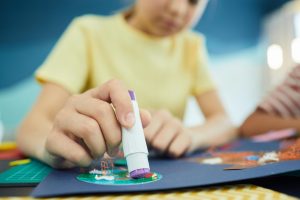Peer mediation programs resolving schoolyard disputes
Schoolyard disputes can be a major source of stress and disruption for students and teachers alike. Whether it’s a minor disagreement between two students or a larger conflict involving multiple parties, these issues can affect the learning environment and create unnecessary tension. As educators and caretakers, it is our responsibility to find effective ways to resolve these conflicts and promote a peaceful and positive school climate. One powerful tool that has been gaining popularity in schools across the country is peer mediation programs. In this article, we will explore what peer mediation is, how it works, and its benefits in resolving schoolyard disputes.
The Basics of Peer Mediation
Peer mediation is a conflict resolution process where trained student mediators help their peers to resolve their conflicts in a safe and confidential setting. It is based on the principles of restorative justice, which focuses on repairing the harm caused by conflicts and building strong relationships between individuals.
The process is simple: when a conflict arises, both parties involved can choose to participate in peer mediation. The mediators, who are typically students chosen for their good communication and problem-solving skills, then meet with the two parties separately to listen to their sides of the story and identify the underlying issues. They then bring the two parties together to facilitate a discussion and help them come to a mutually agreed-upon solution.
The Benefits of Peer Mediation
Promotes Empathy and Understanding
One of the key benefits of peer mediation is that it encourages students to communicate openly and empathize with each other. Often, when conflicts arise, students tend to take a defensive stance and get caught up in their own perspectives. Through peer mediation, they can learn to see the situation from the other person’s point of view and understand their feelings and motivations. This can lead to a deeper sense of understanding and build stronger relationships between students.
Encourages Collaboration and Problem-Solving Skills
In peer mediation, the mediators do not impose a solution on the two parties; instead, they guide them towards finding a mutually agreeable solution. This encourages students to work together and use their problem-solving skills to come up with creative solutions. By involving students in the process, peer mediation empowers them to take ownership of their conflicts and learn how to resolve them in a peaceful and constructive manner.
Promotes a Positive School Climate
In addition to resolving conflicts, peer mediation also has a positive impact on the overall school climate. When students feel respected, listened to, and heard, it creates a sense of safety and belonging in the school community. As conflicts are resolved, tensions and negative emotions are also reduced, creating a more positive and peaceful learning environment.
Implementing Peer Mediation Programs
To effectively implement peer mediation in a school setting, it is crucial to have a well-structured program in place. This usually involves training both the mediators and the students who will seek mediation services, as well as creating clear guidelines and procedures for the process. It is also essential to have the support and involvement of school staff, as well as ongoing evaluation and improvement of the program.
In Conclusion
Peer mediation programs are a powerful tool for resolving schoolyard disputes and promoting a positive school climate. They not only help students learn how to deal with conflicts effectively, but also promote empathy, understanding, and collaboration. By implementing a well-structured peer mediation program, schools can create a safer and more peaceful learning environment for all students.








